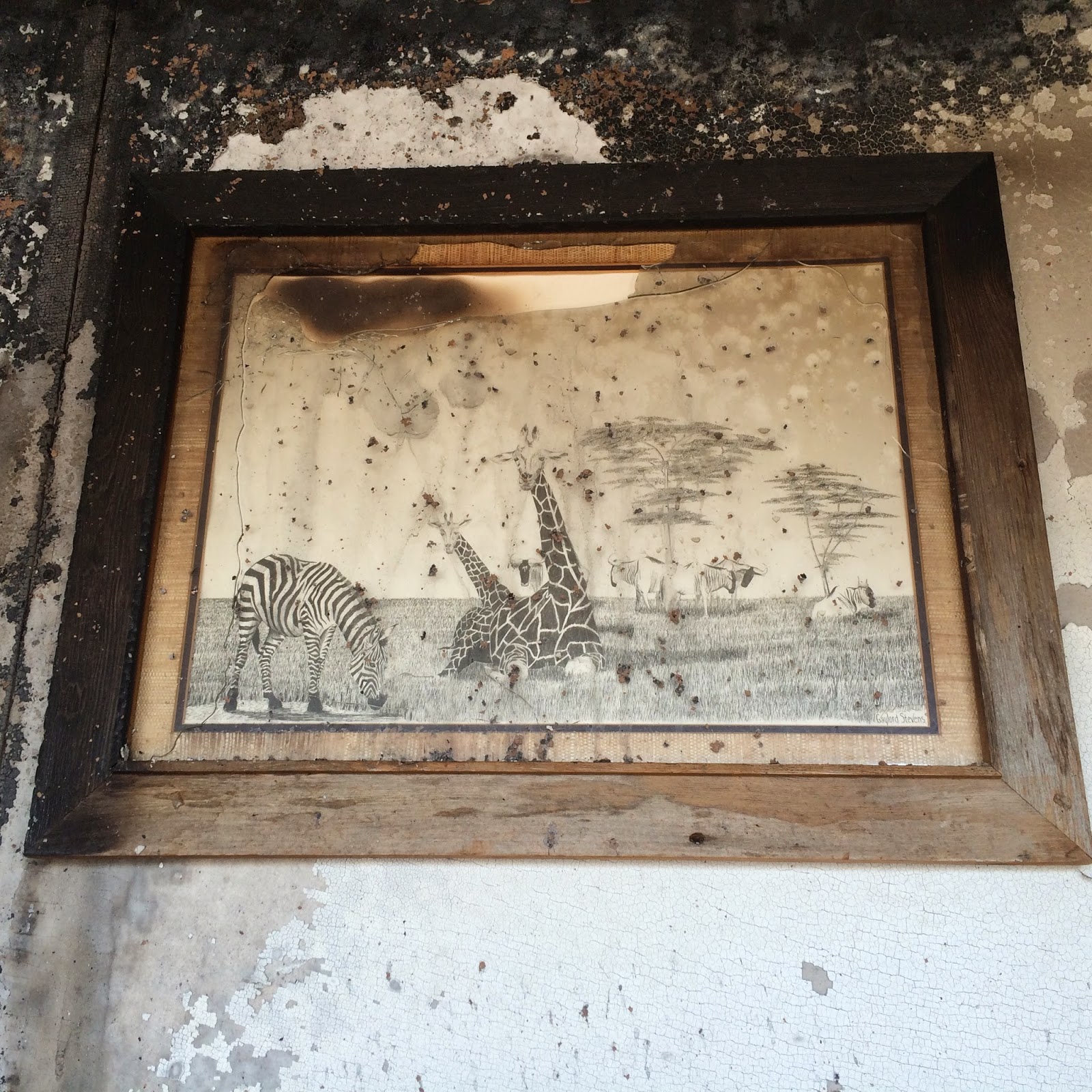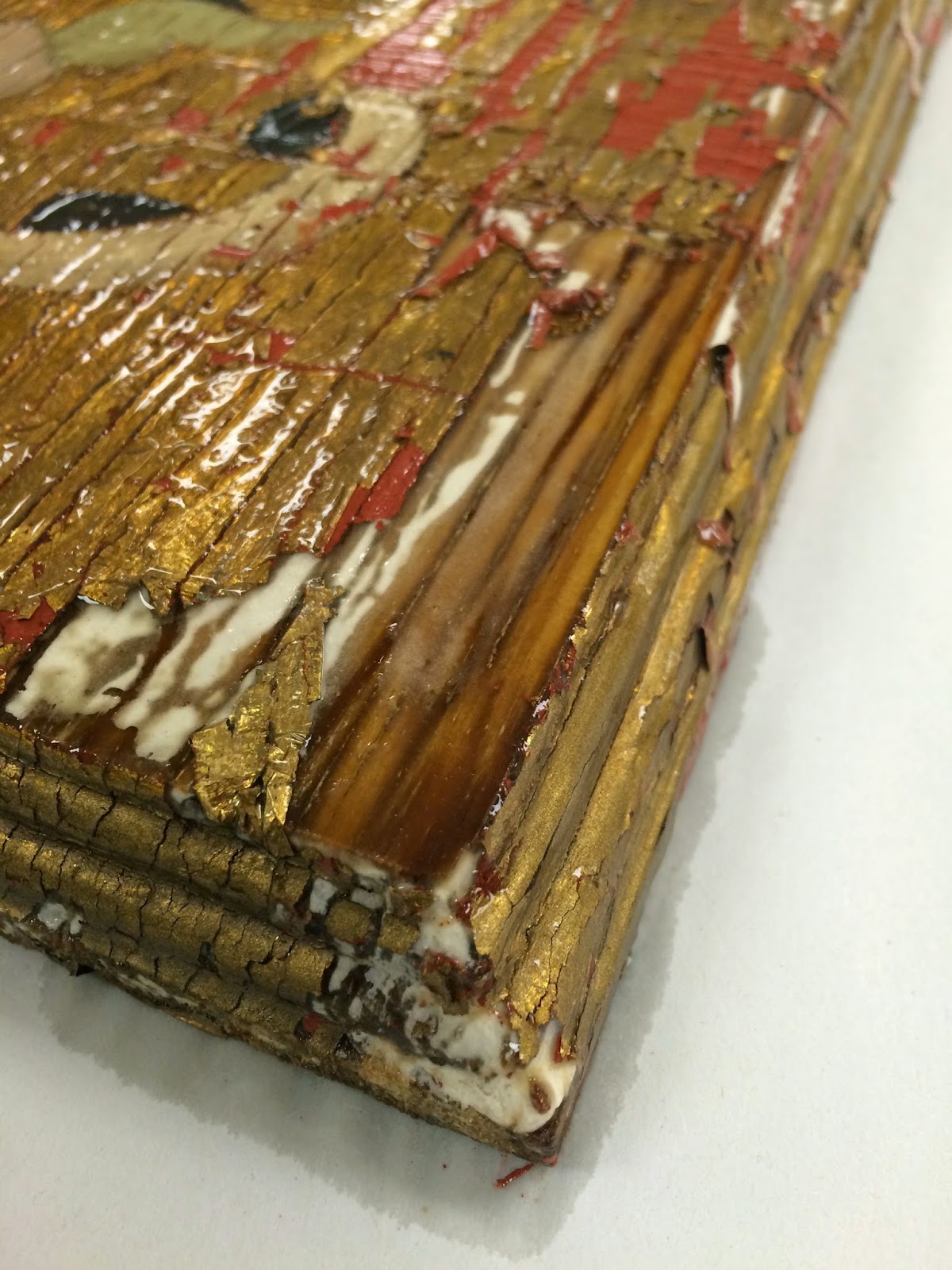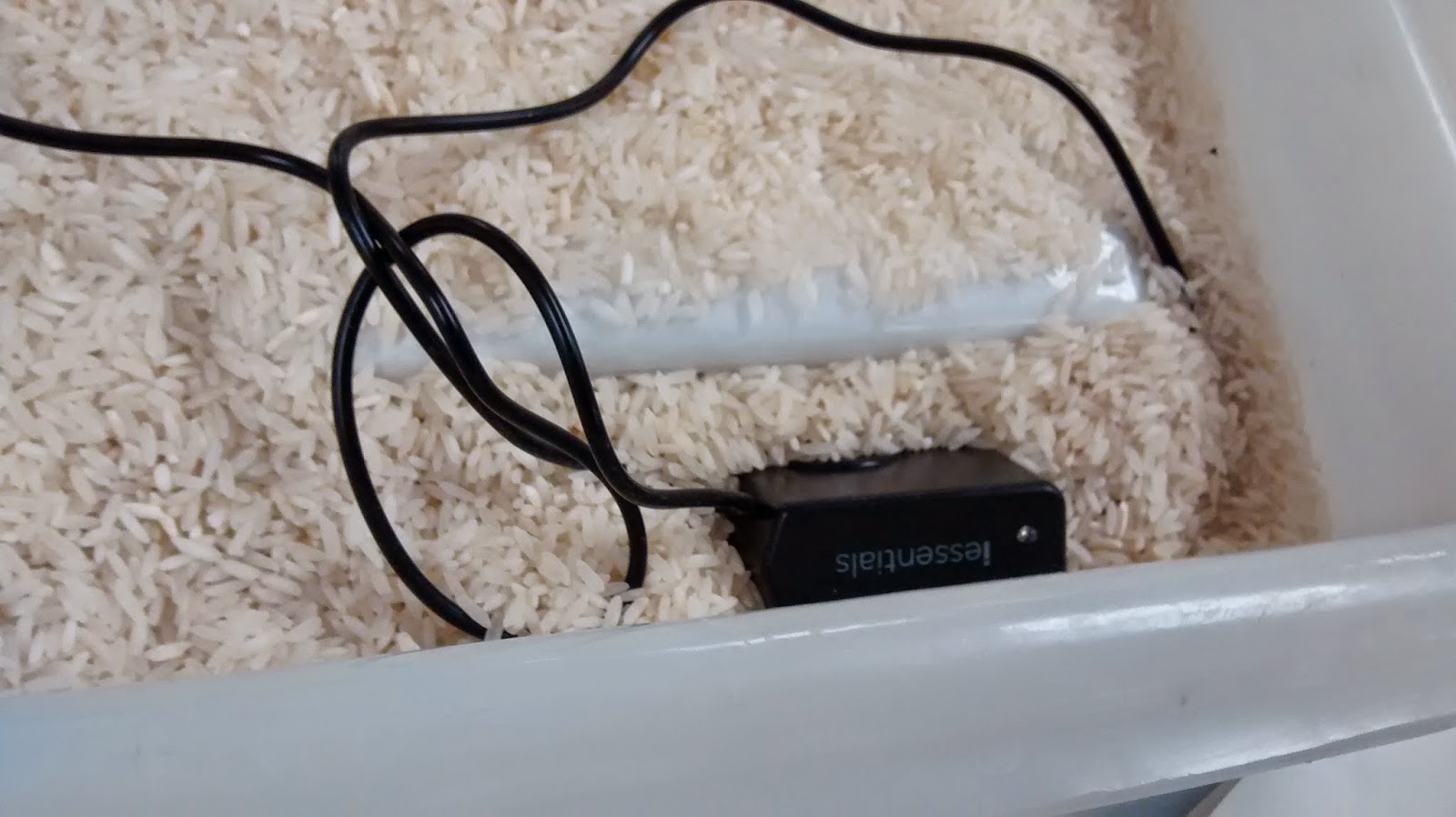The day after the fire took place, we returned to the fire training facility to retrieve salvageable materials from the fire disaster. According to Lt. Elmore, our arson specialist and fire supervisor, it is common for the victims of a disaster to stay away from the scene overnight. Our first instinct is to rush back in as soon as the flames are extinguished, but the firefighters don’t let people back in that quickly. Not only is it dangerous, there is also a certain level of shock that we need time to process. He told us that they recommend all victims of a fire go home for a night, or if their home is the scene of the disaster, to go to a hotel or friend’s house for at least one night. He told us that it typically takes 24-48 hours for people to mentally process the severity of the event and begin planning for recovery.
The first step we took was to discuss a plan. We needed to minimize the time spent on pack-out, while not further damaging any salvageable materials. We wanted to remove the materials worth saving and transport them back to the lab as quickly as possible. Time is certainly of the essence, as the materials had now suffered fire, smoke, and water damage. However, taking a few minutes to come up with a planned and coordinated effort was sure to produce the best results. The best scenario would have been if we already had had a response plan in place. Coming up with a response plan in advance, that clearly designates tasks and responsibilities, is the surest way to respond effectively and efficiently to a disaster.
Three people arrived for pack-out, so we divided up the small room amongst us. One person was assigned the desk, another person focused on the materials on the floor around and under the desk, and the third person removed the items that were situated on the opposite side of the room from where the fire started.
The picture below shows the room as we found it on the second morning. The side of the room at the right side of the picture below was farthest away from the fire. As the picture shows, the fire did not damage the materials on the floor at the right side of the room. They were jostled around a bit, and did suffer some smoke damage, but only to the extent of inheriting a smoky smell (we’ll talk more about removing that smell in another post).
 |
| The room on the morning of the second day, before recovery of salvageable items. |
The picture also shows the state of the materials leaning up against the desk, opposite the corner of the room in which the fire started. These materials suffered water and smoke damage, but the fire did not spread to the side of the desk closest to the room’s open wall. To get a visual idea of how large the fire grew, see the picture of Lt. Elmore walking into the room with his hose a-sprayin’ in our last post.
The materials on and under the desk were damaged the most. The level of severity varied, however, depending on the type of material and the location on or around the desk. For instance, the paper materials, photographic prints, and a sheet of slides were completely ruined, but some of the books at the left end of the bookshelf experienced minimal damage.
 |
| A plastic sheet filled with photographic slides. |
 |
| The bookshelf on the desk after the fire. |
It was evident during pack-out that materials protected each other from the fire. The books were damaged on the spines and textblock edges that had been exposed, but the covers and the text areas of the pages were, for the most part, salvageable. We also found that the materials inside the desk drawers and small metal containers on top of the desk were surprisingly unaffected. One of the drawers showed some evidence of fire damage, but the other drawers showed no evidence that flames crept into the drawers.
 |
| Materials inside one of the right-hand drawers were barely affected. |
 |
| Materials inside a second right-hand drawer suffered damage, but remained salvageable. |
The corner of the room in which the fire started was by far the worst. No materials were salvageable from this corner. There was also a plastic crate near this corner with books inside. We decided to take the crate back to the Lab for inspection without removing any books, but we were not optimistic that many of its contents could be saved.
 |
| Nothing survived in the corner where the fire started. |
 |
| A plastic crate filled with books near the ignition corner was badly damaged. |
We carefully packed any materials on top of the desk, in the drawers, and on top of the shelving into crates and boxes for transport back to the lab. Once a space on the desktop was cleared, the books were packed into plastic crates. The books were very wet. They had experienced water damage because this area was hit hard with water from the firehose. Therefore, we packed the books by wrapping them in waxed paper. This was a precautionary measure, in case the books were placed in a freezer until further inspected. If the books were not wrapped in waxed paper, there was a good chance they would stick together, potentially causing further damage. When removing the books from the shelf, the books at the left side of each shelf were removed first. These were easiest to remove, as they suffered the least fire damage. The badly burned books were easier to remove safely after the book to its left was cleared away.
 |
| A book wrapped in waxed paper is set in a new crate that is being filled. |
 |
| A full crate of books back at the lab. |
During the pack-out process, we discarded quite a few items. These items were appraised on the spot for the extent of damage they incurred, and their value as part of our “collections.” For example, we discarded any items that were burned beyond recognition. We also discarded several damaged items that duplicated other materials.
After the materials made it back to the lab, we began another round of assessment that included triage and prioritizing the items to be cleaned and/or repaired. One thing we noticed was that none of the materials showed signs of mold growth, even up to a week after being back at the lab. This is not to say that mold growth was not possible. Taking advantage of the opportunity to retrieve the items only a day after the disaster helped, though.
During the assessment process at the lab, we divided the items into the following groups:
- Okay as is
- Dry -- needs deodorizing
- Dry -- needs cleaning and deodorizing
- Wet -- needs drying and cleaning
- Wet -- needs drying, cleaning, and rebinding
- Discard (Not salvageable)
 |
| Our class dividing up the items into batches based on type and severity of damage. |
 |
| Salvage isa messy business. The table was much dirtier by the time we were done. Wear gloves! |
 |
| The crate that was near the fire corner. Maybe some of those books can be salvaged after all! |
 |
| Gently separating books stuck together after the fire. |
After the items were divided into these groups, the class began cleaning, drying, and repairing items from the “collections.” These techniques, however, will be described more fully in blog posts coming soon.
The points that we, as a class, took away from the salvage and transport exercise were:
- Create a salvage plan before the disaster occurs. However, if you don’t have a plan in place already, take a few minutes to create a plan of action on the spot (or during that night in the hotel room while you wait to go back to the scene). An ounce of prevention really is worth a pound of cure.
- Perform an initial assessment during pack-out, especially if the materials are going to be transported to another location.
- Label containers as you pack them out. It will save a lot of time during the recovery process later.
- Don't wait too long to respond. We luckily did not see any mold growth as a result of the water used to extinguish the fire. However, if we had waited several more days to begin removing items, we might have seen some mold.
- When packing out books, or other items that will be frozen, wrap each item in waxed paper. This will prevent the items sticking together as the water they hold freezes.
- Items that were inside closed containers and closed drawers fared the best (other than those minimally affected items that were far away from the fire, of course). Close your desk drawers!
- Books on the shelf protected each other. The edges and the spines were damaged because they were exposed. However, most of the cover surface area, and the text areas of the pages, were not damaged.
- Be careful where you step. Large pieces of glass in our framed picture broke because of the heat in the room and fell to the ground.






















 i
i





































